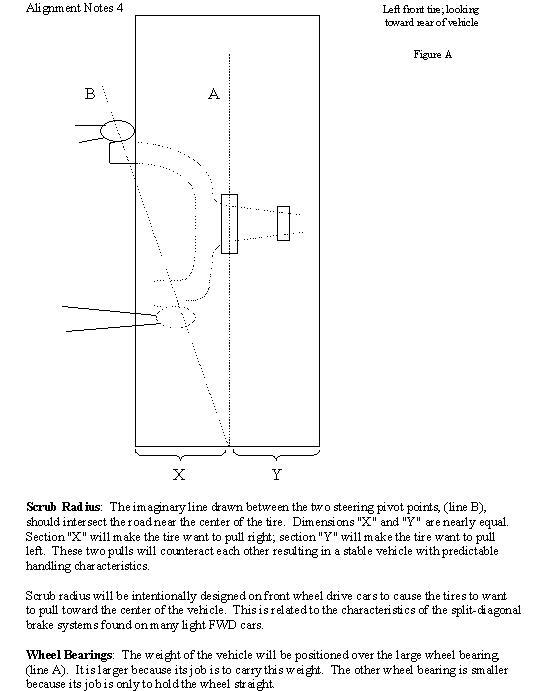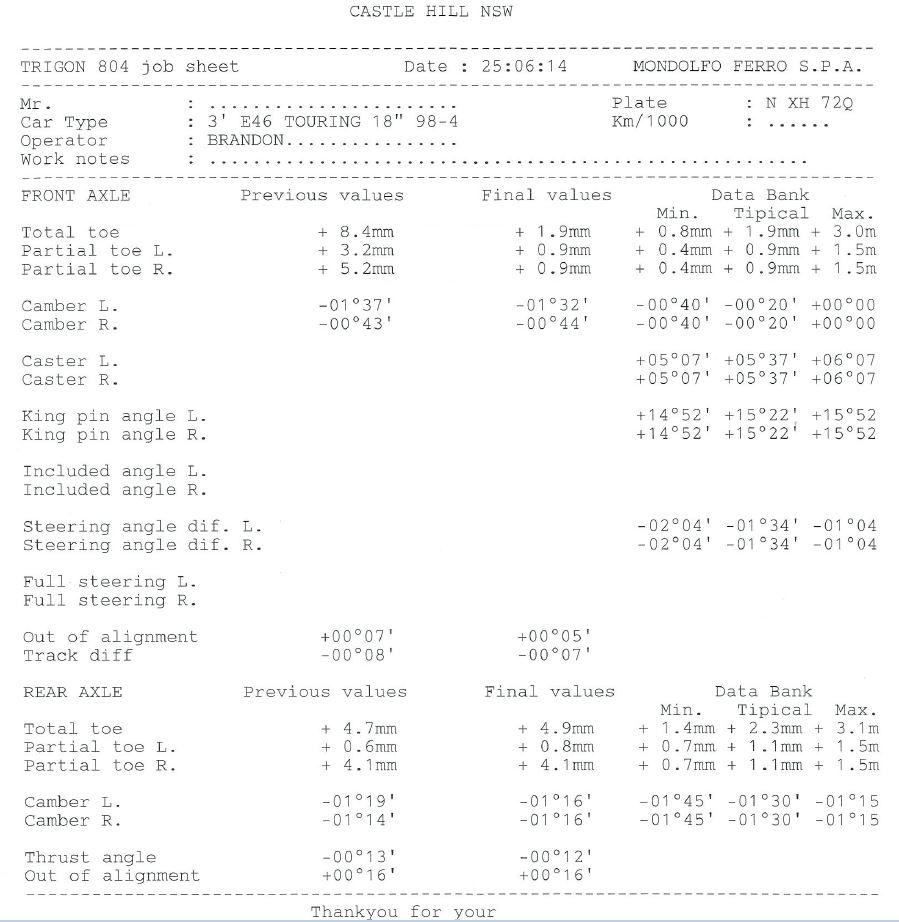I'm very pleased you're asking about this and that you know there can be consequences. Being on the rear, you shouldn't have anything to worry about as far as handling. It's a different story on the front. As for rotating the tires, you might consider a viewpoint I subscribe to for my vehicles. If you have an alignment issue that is causing accelerated tire wear, lets say on the front, rotating the tires periodically will cause all four to wear out at the same rate, then you buy four new, matched tires. If you never rotate the tires, the rear ones will last longer but the front ones will wear out sooner, so you replace only those two. You replace half as many tires but twice as often.
Another reason I don't rotate my tires is it isn't uncommon to get one that causes a tire pull. There's no actual defect; it's just a characteristic related to its rolling resistance. If I have no pulling problem, why risk causing one by putting the rear tires on the front where one of them COULD cause a pull? As an alignment specialist, I'm very aware of every little unexpected pull, noise, or vibration, even though my daily driver is 25 years old! I won't be happy with a pull on any of my vehicles, even if I know it's just a tire issue.
This doesn't apply to a few car models. In particular, the '80s Ford Escorts and Tempos came with extremely horrendous alignment problems that couldn't be corrected and tires lasted about 15,000 miles on the front. The rear could be fixed with aftermarket parts to reduce the terrible wear, but while that made the rear tires last longer, they no longer made up for the bad wear in the front. The front tires were tipped out on top a real lot and that made them shred the outer edge of the tread. If you rotated them every 5,000 miles, when on the rear, they were tipped in a lot so they only wore on the inner edge. The center of the tread looked like brand new, but by 15,000 to 18,000 miles both edges were scrubbed down to the cords.
There were also some large '80s front-wheel-drive Cadillacs that had alignment problems on the rear wheels, and there were no adjustments to correct that. Rotating those tires might extend the life of all four a little.
Your car doesn't have those issues. The wheels are set to normal alignment settings that give good handling and tire wear, and there are adjustments available when that becomes necessary during a normal maintenance alignment. The issue now related to the offset on the one wheel is not a factor on the rear. On the front, however, besides the brake interference you already are aware of, the offset also affects a non-adjustable alignment angle called "scrub radius".
I included my sad drawing of scrub radius I used to hand out to my students. I hope it shows up okay. Instead of the upper ball joint shown, your car has a strut, and the upper mount is the upper steering pivot. That, and the lower ball joint, is what line "B" is drawn through.
From this point, the following description is a copy of what I normally post for people wanting to lower their cars or lift their trucks. This is the toned-down version, and while most of it doesn't apply to you, it's faster than trying to type this wondrous information all over again.
If you look back from in front of the vehicle and draw an imaginary line through the upper mount and lower ball joint which are the steering pivots, that line was very carefully-designed to intersect the road surface in the middle of the tire tread. The half of the tire to the left of that point wants to scrub on the road and pull the steering system to the left. The other half of the tread wants to pull it to the right, and those two forces offset each other. When you do anything to alter scrub radius, especially when you alter ride height, that changes significantly. The tire will react to every little bump in the road instead of canceling them out. That makes for an extremely tiring vehicle to drive.
Scrub radius also has a big effect on handling in corners and braking. The brake hydraulic system is designed around a specific ride height, weight distribution, and weight transfer. When kids lower cars, they get the false illusion the car handles better and brakes in a shorter distance. In fact, less weight than normal transfers to the front under hard braking so the front brakes can lock up easier. A skidding tire has no traction or steering control so you can't press as hard as normal on the brake pedal. More weight stays on the rear wheels but those brakes don't get more stopping power.
You can be very sure lawyers and insurance investigators know all about scrub radius and will use it against you when they're trying to shift the blame from their client to you. That other guy may have run the red light but they will convince a jury that you were partly at fault for the crash because you were less able to avoid it, and they will be right.
Scrub radius has also been modified by the engineers for front-wheel-drive cars. Almost all of them use a "split-diagonal" brake hydraulic system, meaning the left front and right rear brakes are on the same system. On older and all rear-wheel-drive cars, the two front wheels were on one system and the two rear wheels were on the other. If you lost the front brakes due to a leak, you still had about 30 percent of your stopping power from the rear brakes. What most people didn't realize though, unless as a youngster with no money, you blocked off the fluid flow to one front wheel instead of fixing the problem, is with just one front brake working, when you applied it, that would tear the steering wheel out of your hand. You had to have both front wheels braking evenly to counteract each other by being connected through the steering linkage.
Front-wheel-drive cars have a lot more drive train weight on the front, so a loss of the front brakes would leave you with less than 20 percent stopping power from just the rear brakes. The rear wheels would lock up, the tires would skid, and they'd find you in the next county before the car would stop! The split-diagonal system addressed this. A failure of one of the two hydraulic systems always will leave you with one functioning front brake and 50 percent of normal stopping power. Now the issue is to offset tearing the steering wheel out of your hand when you brake, and that is done by modifying scrub radius. Line "B" has been moved out so section "Y" of the tire tread is much smaller, and "X" is larger. Since this is looking back at the left tire, section "X", being bigger, wants to scrub, or tug hard to the right, and section "Y" is way too small to counteract it. However, the same thing is happening on the right front tire. The result is both front tires are still offsetting each other, and the car goes straight.
What this addressed though is when there's a leak in one of the brake hydraulic systems. Suppose the right front / left rear circuit stopped working and you only had the left front brake as the major contributor to stopping power. The tire itself is going to try to stop, and acting as a lever, that is going to tug on the steering linkage as before on rear-wheel-drive cars, and tug the steering linkage and steering wheel hard to the left. BUT, ... Section "X" of the tread is going to tug hard to the right. Chrysler has had this so well-perfected that other than the red "Brake" warning light, you won't even know something happened. On most other cars, all you might see is a tiny wiggle in the steering wheel, and even that won't be near enough to cause loss of control or a significant change in steering direction. You only have half your braking power, but you can stop in a safe and controlled manner with no unexpected reaction in the steering system.
All that wondrous design effort goes out the window when you change scrub radius. Now you can see that anything that moves line "B" is going to change how the car responds when steering and when braking, and this is why lawyers and insurance investigators love to find any of these kinds of modifications, ... On the other guy's car. You can see that installing a wider wheel / tire, a tire with a larger outer circumference, or a wheel with a different offset will change scrub radius. This is what you have to consider every time you see a silly-looking car or truck with giant wheels and almost no tire sidewall. But remember that raising or lowering ride height changes the relationship between the upper and lower steering pivots and that also changes line "B".
I know that covers a lot more than you asked, but I'd rather you be informed before you start altering things. As a former suspension and alignment specialist, I make sure all of my cars, including a few '70s muscle cars, are exactly at the specified height, and nothing has been altered that could have me answering questions in front of a jury.
Okay EnvyYou, I'm live again! I understand that 7mm isn't that significant, but to be safe AND to address the brake issue, you might look for a wheel spacer that you can install behind the wheel to correct the offset problem. I can relate this to an alignment issue on larger pickup trucks. Many of them from the '90s had really tough suspension systems but there was no way to adjust "camber", one of the main alignment angles. To correct a pull, there was a set of three wheel spacers available. First you tried a 3.0mm spacer. If the pull was solved, you were done. If it pulled the other way, you exchanged it for a 1.5mm spacer. If the pull was better but not gone, you installed the 5.0mm spacer. For a really bad pull, you could order a 7.0mm spacer but you also had to install longer wheel studs. I never had to resort to that, but that gives you an idea of how moving a wheel out only 1.5mm could greatly affect a pull. This offset is what you want to avoid on the front. What I would do is just leave that wheel on the rear where it wont affect anything, until and if you want to find the right wheel.
Image (Click to make bigger)
Tuesday, April 7th, 2015 AT 9:15 PM





